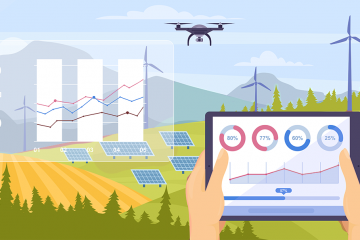Weather is a part of our daily experience. Some prefer a hot sunny beach day, and others enjoy reading a good book and a hot chocolate drink on a cold day. We can’t seem to agree on the ideal weather for all, but we can all agree on one fact that is weather patterns change.
With global warming and climate change, weather patterns are changing faster than ever. One major contributor to global warming and climate change is air pollution. Air pollution and weather co-exist in our atmosphere, so they do interact and influence each other. Cities and industrial areas create pockets of high pollution that affect the surrounding climate.
Impact of Weather Conditions on Air Quality
Summer is an excellent time to go out to the beach or have a picnic at the park. The air is stagnant during hot weather due to a lack of air movement resulting in poor air quality levels. Therefore, it is better to stay indoors than go for a picnic in the park.
After heavy rainfall, the air feels clean as the rain washes out air pollutants. This ‘wash out’ is called Wet Scavenging, and it helps improve the ambient air quality. Wet scavenging reduces PM2.5 and PM10 in the surrounding air.
Wind can also clear out air pollutants, but windstorms can bring in air pollutants like dust, particulate matter, and pollen from far-off places – low air quality. Windstorms also trigger wildfires such as the Santa Ana winds in California. Fires are well known to affect the air quality with smoke, soot, and Particulate Matter (PM2.5 & PM10). Recent wildfires across the world from Northern California, the Amazon Forest to all over Australia, are evidence of this.
Impact of Air Pollution on Weather
Scientists in China have found that air pollution pockets block the sunlight from reaching the Earth’s surface. This phenomenon is called Global Dimming. Global Dimming impacts the climate, photosynthesis in plants, the hydrological cycle, and solar power. The study states that China may face billions of dollars in loss of solar power production.
Harmful air pollutants such as methane and black carbon are short-lived climate pollutants (SLCP) that exacerbate climate change. Weather patterns observed over a long period is called climate. The long-term persistence of SLCPs in the atmosphere holds greater global warming potential than carbon dioxide. Methane is a precursor to ground-level Ozone. According to the World Health Organization, Black carbon and Ozone affects weather processes and reduce agricultural production.
The primary source of outdoor air pollution is large amounts of Carbon emission from burning fossil fuel for the transport and industrial production sector. They release toxic air pollutants like carbon dioxide, particulate matter, and more. These affect the weather and human well-being. Many major corporations like Apple, Microsoft, including India’s Railway network, are pledging to attain carbon neutrality by 2030.
What is Carbon Neutrality?
In simple words, carbon neutrality refers to eliminating carbon emission associated with transportation, industrial production residue, and other human activities. With significant players aiming towards carbon neutrality, many inspired businesses aim to do the same.
Carbon neutrality is attainable by creating policies and implementing actionable missions. Here is where Ambee’s data can be invaluable and implemented. Our air quality API can help your business’ journey in taking steps towards carbon neutrality.
With Ambee’s actionable air quality and weather api, many environment-based events can be mitigated or avoided with better planning possible only with accurate real-time information. The right data at the right time will help create or optimize policies to offer a win-win situation on air pollution, climate, and human health front.
This blog was written by Pushya C, Content Writer at Ambee.




